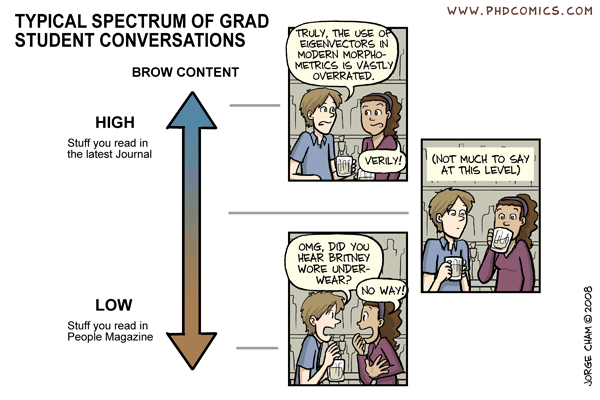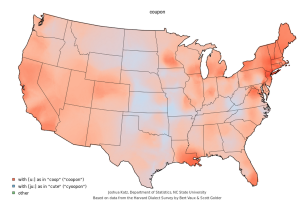Flashback to my first quarter of grad school.
We take turns buying snacks with a $40 budget in my department. It was my turn that week. I bought a lot of snacks. An older grad student comments on all the snacks, and I mention that I found a couple coupons, so I was able to get more snacks than usual.
His response?
“That’s some wicked palatalization you got there!”
It’s worth noting that there are two ways to pronounce “coupon” in American English. One way is /kupɔn/ (like “chicken coop”), which is how about two thirds of Americans pronounce it. The other way is /kjupɔn/ (like “cute”), which is how I (and about one third of Americans) pronounce it. The second way has /j/, which is a palatal glide. Hence, my way of saying “coupon” has some palatalization in it compared to the more common version.
So there I am, a fresh-faced first-year grad student, trying to make small talk about snacks, and suddenly a sixth-year pulls “palatalization” on me and I’ve momentarily forgotten what that means.

Suddenly other grad students are joining this conversation, and the topic is no longer about snacks, but my dialect. Where am I from? Where are my parents from? What languages besides English do I speak? Why do I palatalize “coupon”?
If you’re wondering how grad students can go from snacks to an analysis of dialectal variation in 2 seconds flat, this is so common there’s a PHD comic about it:

We didn’t come up with an answer then. Rather, we all had a patchwork of anecdotes. My California-native mom palatalized, my midwestern grandmother did not. Others had the opposite observations, thinking midwesterners palatalized but Californians did not.
The truth? Well, the truth is that it is a patchwork, and there doesn’t really seem to be any one region that uses one or the other. Non-palatalized is definitely more common, and palatalized might be slightly more common in the midwest (the opposite of my own personal experience, but in line with some other comments):
This is a heat map created in R by J Katz using the results of his dialect survey. Basically, the blue areas are “kju:pon” (with palatalization) and the red are “ku:pon” (without). The darker the color, the more strongly correlated that variant is with that area. So in New England and New Orleans, the dialect seems to strongly favor no palatalization (darker red). Elsewhere, the reds and blues are fairly light, indicating that there might be variation in each area.
Anyway, this and other cool maps can be found here. Dialects are cool!!


You must be logged in to leave a reply.